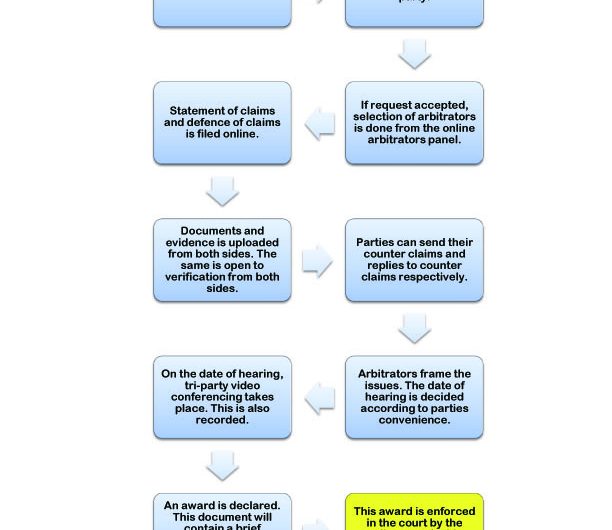The online arbitration process does not differ very much from the offline process, except for the fact that other forms of communication are used. The final award declared can be enforced by the website as well as the parties.
This blog will walk you through the basic procedure of arbitration in the online medium.
Firstly let’s define arbitration.It is an easy form of alternative dispute resolution (ADR) in which parties involved in a dispute have a choice of not going to courts and presenting their evidence to a neutral “arbitrator” in an informal setting. Arbitrator is not much different from a judge. After considering all the evidence, the arbitrator renders a decision, a so-called arbitral award. This is legally enforceable in courts.
The online arbitration process does not differ very much from the offline process, except for the fact that other forms of communication are used than in a face-to face procedure.
We can see the working of online arbitration in following 12 steps:
“Assume there is an online portal called “odrways.com” which provides this ODR service. You are the complainant and the party you file the claim against is the respondent.”
- You log onto that portal and file your complain. You describe your problem and give the contact details of the party you want to file the claim against the respondent and upload the requisite documents on the portal.
- The portal will contact and send the request of arbitration to respondent. If this request is accepted, the process begins. Note that the mutual consent of both parties to follow a particular procedure is a pre-requisite for any ADR procedure.
- There is panel of arbitrators on the portal containing details about the expertise and experience of each arbitrator. Both parties can select their individual arbitrator and the third arbitrator can be appointed by the consensus of both parties. In some cases, portal also holds the discretion to appoint a single arbitrator. The number of arbitrators needs to be odd.
- You are then required to file the statement of claims against the respondent and upload the requisite documents on the portal.
- The respondent will review the claim and provide a statement of defence along with the required documents.
- Counter claims and replies to counter claims are uploaded.
- Both parties will further be given an option to upload any other evidence.
- Admissibility and denial of evidence is done. Both parties can verify each other’s evidence. Then affidavits are uploaded from both sides.
- Both parties are supposed to send their respective issues of contentions. These are basically the disputed questions between the parties.
- Final issues are framed by the arbitrator. A date of hearing is decided according to the convenience of both parties.
- If the arbitrator cannot reach a decision on the basis of the submitted documents, he can go for a tri-party online video conferencing. Oral arguments are taken and an award is given accordingly. This award is like a document which contains the summary of claims and evidence and the final decision.
- Since this is like institutionalized arbitration, the award can be enforced by the parties as well as the portal.
This award is now legally binding on both parties.
And your problem is solved. Without even stepping out of your house.





Hi Pranjal,
Great article. Can you please share your email id and contact number in order to get connect with you.
Thanks